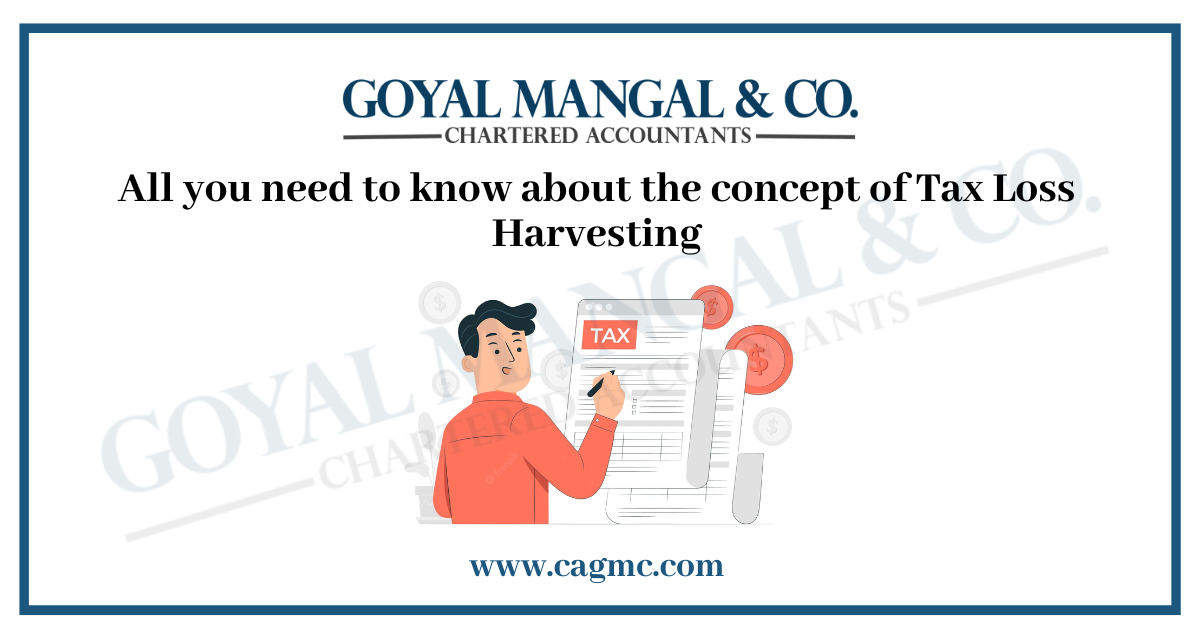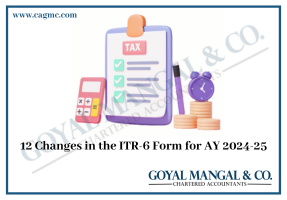 Equity mutual funds and stock investments are becoming quite popular. Previously, such investments were uncommon; but, with the advancement of technology, the ability to purchase and sell mutual funds and stocks on smartphones is now as simple as ever. As a result, millions of Indians have resorted to mutual funds and stock market investment to increase the value of their money. However, as we all know, investing in the equity markets is a dangerous business since the value of a stock or mutual fund unit can plummet with considerable unpredictability. Market movements are unpredictable, and no one can truly foresee how the market will act.
Equity mutual funds and stock investments are becoming quite popular. Previously, such investments were uncommon; but, with the advancement of technology, the ability to purchase and sell mutual funds and stocks on smartphones is now as simple as ever. As a result, millions of Indians have resorted to mutual funds and stock market investment to increase the value of their money. However, as we all know, investing in the equity markets is a dangerous business since the value of a stock or mutual fund unit can plummet with considerable unpredictability. Market movements are unpredictable, and no one can truly foresee how the market will act.
There is no reason to give up hope if an investment you made in the equities market is not performing as well as you thought. Tax Loss Harvesting allows you to make the most of your underperforming assets while reducing your capital gains tax bill.
|
Table of Content |
Synopsis
You realize financial gains when you invest in equities funds. These capital gains are taxed depending on how long you held the fund. Tax-loss harvesting is a method of lowering one’s tax burden on assets. To lower your tax burden on capital gains, you sell your stocks/fund units at a loss through tax-loss harvesting. It is a way of offsetting capital gains on equity against capital losses in order to pay less tax.
Long-term capital gains (LTCG) on the sale of equity shares and equity funds were formerly tax-free in your hands. However, the Union Budget 2018 amendment amended the tax treatment of LTCG on the sale of listed equities shares and equity funds.
Beginning April 1, 2018, and LTCG of value above Rs 1 lakh would be taxed at a rate of 10%, with no indexation. Short-term capital gains (STCG) are taxed at a 15% rate. In this situation, tax-loss harvesting can be used to lower the tax burden on both LTCG and STCG. Because the tax rates on short-term capital gains are greater than those on long-term capital gains, investors typically use it for STCG.
Meaning of Tax Loss Harvesting
When we participate in the equity market, whether through mutual fund units or stock purchases, we can either generate capital gains or capital losses. These profits or losses are classified as Long Term Capital Gains/Losses or Short Term Capital Gains/Losses based on the length of time we remain involved.
Capital gains earned through equity investments are now taxed. Short Term Capital Gains (STCG) are taxed at 15%, whereas Long Term Capital Gains (LTCG) in excess of Rs. 1 lakh are taxed at 10% without indexation.
As a result, anytime you receive returns on your short or long-term equity investments, you must pay the aforementioned tax.
But here’s the essential part. If your portfolio is varied, you may have certain investments that have resulted in losses. When determining your tax burden, the government permits you to deduct these capital losses from your capital profits. As a result, rather than immediately taxing your capital gains, you can minimize your net gains by taking into account your losses as well.
Assume you made short-term capital gains of Rs. 50,000 on your stock investments, but you also had short-term capital losses of Rs. 20,000. Thus, in this scenario, you must pay STCG on the net profit of Rs. 50,000-Rs. 20,000, which is Rs. 30,000.
You can take advantage of this benefit to decrease your tax liability. Tax loss harvesting is the process of disposing of stock assets that you believe are underperforming. When you sell these assets, you certainly incur a loss. However, these losses can be used to offset capital gains in other investments, lowering capital gains tax.
Working on Tax Loss Harvesting
Most investors prefer to use this method at the conclusion of the fiscal year when they must submit returns. However, you may utilize it strategically throughout the year to keep your capital gains at a manageable level. Tax-loss harvesting begins with the sale of a stock or an equity fund whose price has been consistently declining. You believe that the security has lost much of its value and that the odds of recovery are slim. Once the loss is realized, it is adjusted against capital gains achieved by your portfolio throughout time.
Let us explain this with an example. Assume your portfolio generated STCG and LTCG of Rs 1,000,000 and Rs 15,000 in a particular fiscal year. Short-term capital losses totaled Rs 50,000.
Tax due (without claiming tax losses) = [(Rs 100,000 * 15%) + (105,000-100,000)*10%] = Rs 15,500
Tax due (with tax loss harvesting) = [(Rs 100,000-Rs 50,000) * 15%) + (105,000-100,000)*10%] = Rs 8,000
The computations may appear to be difficult and time-consuming. The proceeds from the sale of the losing stock/equity fund might be utilized to purchase a profitable stock/equity fund. This type of replacement is required to keep the portfolio’s original asset allocation.
Furthermore, it preserves the portfolio’s risk-return profile. Among other things, tax-loss harvesting is an important instrument for saving a lot of money on taxes. You will also learn how to diversify your portfolio in order to get greater returns. It will not compensate for your losses but help you save money on taxes.
Benefits of Tax Loss Harvesting
The following are the benefits of Tax Loss Harvesting:
- Postpone Tax Liabilities: Despite making more assets each and every year, the vast majority of investors don’t always have an exit strategy in place. However, terminal value savings would be advantageous if your investment could last for more than 10 years. Choose LTCG for delayed tax obligations with low rates of taxation rather than paying income tax on STCG.
- Cross Assets for Diverse Portfolios: Economic advisers typically encourage smart investors to have a broad portfolio, which is especially advantageous for tax-loss harvesters. Losses from asset classes with lower tax rates can be offset by profits from asset classes with higher tax rates.
- Benefits of Short-Term and Long-Term Investment: You could choose to withdraw your stock investments after making several different stock sector investments to keep the profits. If any other assets have been losing money, you can reduce the 15% STCG tax by recovering short-term depreciation. If these shares become productive after one year, your tax obligation for LTCG will be merely 10%.
How does Tax Loss Harvesting help in Reducing Taxes?
Tax-loss harvesting is a method used by traders/investors to reduce the capital gain tax burden by selling securities with negative returns at a loss. Tax loss harvesting is frequently referred to as “tax loss selling.” This technique is often employed at the conclusion of the fiscal year, but you can harvest your losses at any moment during the fiscal year to enjoy the rewards. Although tax-loss harvesting cannot return an investment to its original position, it might lessen the severity of the loss. For example, a decrease in the value of Security X might be sold to offset an increase in the price of Security Y, so lowering Security Y’s capital gain tax burden.
Because short-term capital gains are taxed at somewhat higher rates than long-term profits, this strategy is mostly employed for them. This method, however, may also be used for long-term benefits.
Tax-loss harvesting is a method for converting a percentage of capital losses into tax offsets in order to lower the outflow of capital gain tax. When you sell some of your assets at a loss to balance the gains on other equities, you only have to pay taxes on net profits. Investors might proceed by selling the failing assets and replacing them with similar assets to maintain the portfolio allocation.
While harvesting helps to decrease your tax burden on capital gains for the current fiscal year, the Income Tax Act, of 1961 permits you to carry forward capital losses for up to eight years. This provision can assist you in recovering the losses of investments whose prospects for development are gloomy in the near future. For such investments, you can report losses and carry them forward to offset future capital gains.
What is the process for initiating Tax Loss Harvesting?
When filing returns just at end of the fiscal year, the majority of shareholders choose to use this technique. However, one can strategically deploy it throughout the year in order to maintain overall investment income at a sustainable rate. Selling the stock or equities investment that is undergoing a steady price fall is the initial step in the tax-loss harvesting process. You believe that the investment has mostly diminished in value as well as the likelihood of recovery is low. When a loss is incurred, it is balanced against whatever financial increases your portfolio is making during the time period.
When some of your stocks or equity continually performs poorly, tax-loss harvesting starts. To lower your tax obligation on capital gains, you might sell your stocks or funds at a loss and reinvest the proceeds right away. This enables you to compare the loss to the capital appreciation your portfolio has generated throughout the time period.
One should follow the following process to start with Tax Loss Harvesting:
- Maintain Consistent Investment Monitoring: Look out for any investments that have consistently lost money or a capital loss.
- Selling Stocks at a Loss You must sell off these assets to record a capital loss in order for tax-loss harvesting to start, or you risk missing out on the opportunity to do so.
- Reinvest Funds: Find similar investing strategies that are in line with your financial objectives after selling your prior investment.
- Remember to Claim Losses: To finish tax-loss harvesting, claim the economic loss on your tax return.
Points to consider prior to choosing Tax Loss Harvesting
Since we’ve become aware that Tax Loss Harvesting may be used to balance an investing deficit by lowering taxes, it is important to remember that you should only use this strategy after thoroughly comprehending all of the related issues. Before choosing Tax Loss Harvesting, we should bear the following points in mind:
- Selling your assets at a loss is always a requirement of Tax Loss Harvesting. If you invest in other assets, there is no guarantee that you will retrieve your losses.
- Only long-term capital gains and losses are able to be offset. In contrast, short-term capital losses can be offset against several long-term and short-term returns.
- Tax Loss Harvesting should only be done as a tax-saving tactic, not as an investment one.
- Prior to actually selling your assets at a loss, take care to precisely evaluate your tax liability.
Conclusion
Lowering your taxes on capital gains liability is a terrific method to use your equity fund setbacks to your benefit. Choose Tax Loss Harvesting as an impact mitigation measure the very next time you come across an equities asset that is no longer recoverable.







